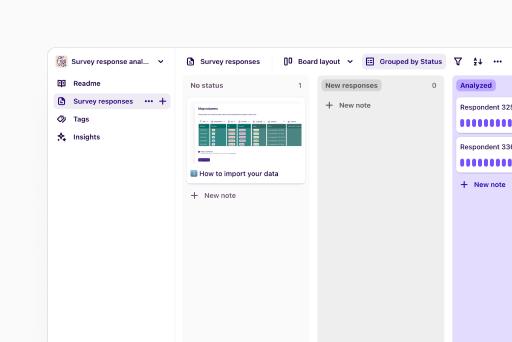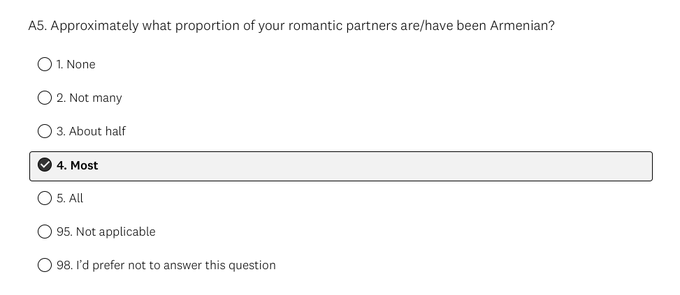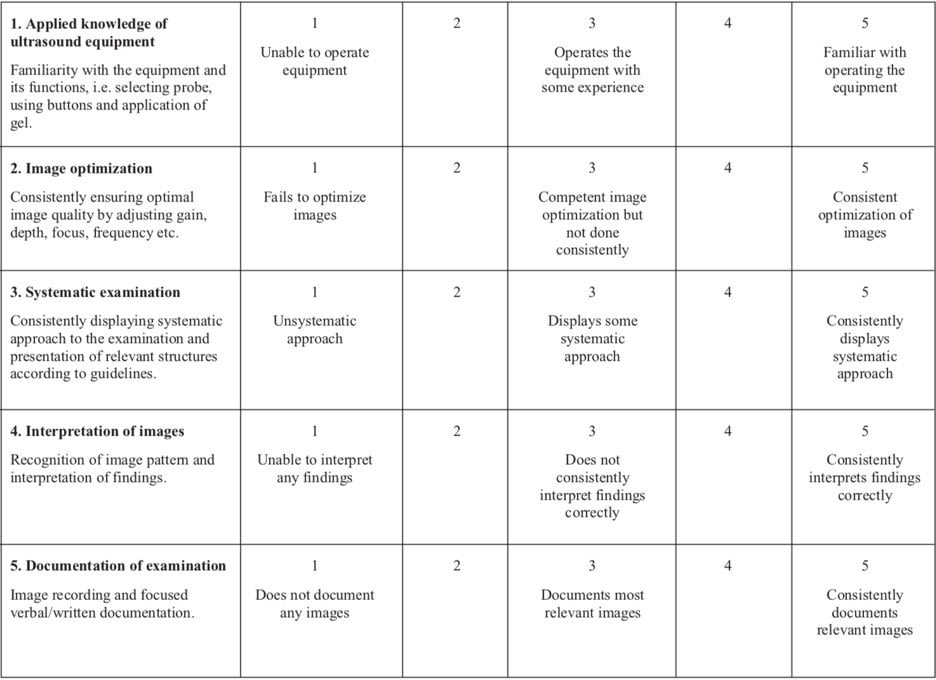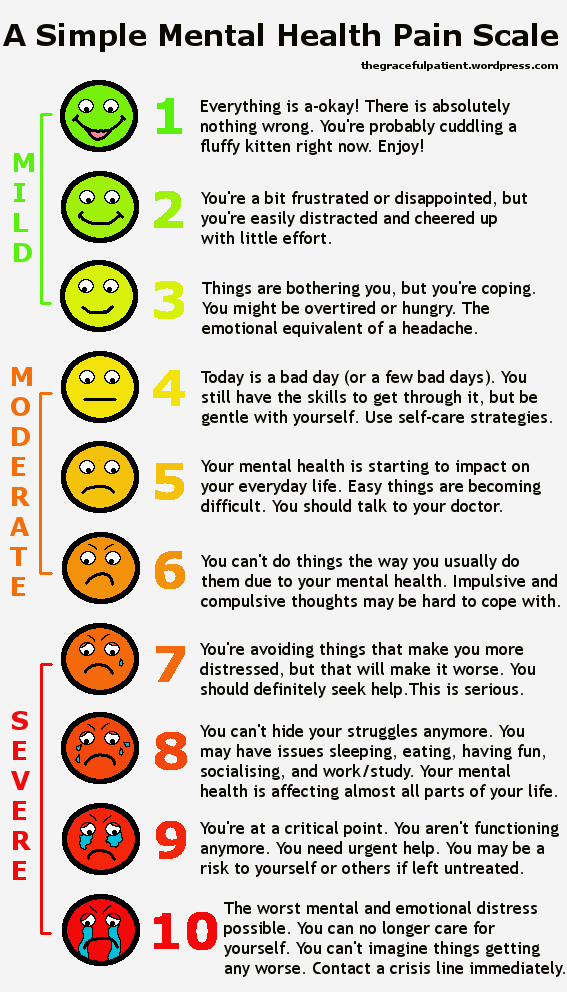What is a rating scale? (With examples)
Last updated
5 April 2023
Reviewed by
A rating scale is a survey question that allows respondents to compare concepts, objects, or attributes. Rating scales are a type of close-ended question, so respondents choose from a predetermined set of choices rather than responding in their own words.
You can use rating scales in online and offline surveys. Companies commonly use these scales to survey product features, customer service feedback, and employee performance.
Pairing rating scales with open-ended questions can help you explore the thought process behind an answer. If you ask a consumer to rate a product, you may wish to follow up with a question to gain further insight, such as, “Why did you choose that rating?”
Free template to analyze your survey results
Analyze your survey results in a way that's easy to digest for your clients, colleagues or users.
Use template
What are the advantages of a rating scale?
Rating scales are excellent tools for capturing insights about respondent perceptions that you can analyze qualitatively or quantitively.
Another benefit is that rating scales are easy for respondents to understand.
For survey designers, these surveys are simple to create and quick to analyze.
How are rating scales categorized?
We can categorize rating scales as ordinal or interval.
Ordinal scales (or rank order scales) list the questions in an ordered form.
For example, a survey might ask respondents how important specific traits are in their friends:
"How important is honesty in a friend?"
Very important Important Neutral Unimportant Very unimportant
These choices are in order from most important to least important. No matter the choices, ordinal rating scales list them in order.
Intervalrating scales also include multiple choices, but each choice has a quantifiable difference.
For example, we could take the previous options and assign each choice a number:
Very important (5) Important (4) Neutral (3) Unimportant (2) Very unimportant (1)
That’s an interval scale, and they’re helpful when you'd like to assess your data quantitatively. Unlike an ordinal scale, you can easily use interval scale responses to illustrate the mean, median, range, and standard deviation of responses.
What are the different types of rating scales?
In surveys, you'll find 14 types of rating scales, some of which may be ordinal and some interval:
Adjective checklist
Comparative intensity
Compound matrix
Fixed sum
Forced ranking
Frequency
Likert
Linear numeric
Paired comparison
Pick some (a.k.a. Top Task)
Pictorial/graphic
Semantic distance
Visual analog/slider
Adjective checklist
An adjective checklist scale includes a list of adjectives to describe a person or object, and
respondents typically rate the accuracy of each adjective.
Perhaps the most well-known adjective checklist is the Adjective Check List (ACL). This psychological measure assesses people's personalities.
Comparative/comparative intensity
Comparative scales (or comparative intensity scales) are a type of ordinal scale where respondents compare two or more objects simultaneously.
Survey interpreters use the results to evaluate and compare the objects.
Compound matrix
A matrix scale (or compound matrix scale) allows respondents to rate multiple items in each question. Like comparative scales, matrix scales allow survey designers to gather respondent feedback on two or more objects. Matrix scales may be ordinal or interval.

Fixed sum/constant sum
In a fixed sum (or constant sum) scale, respondents rate a series of objects or attributes by assigning each a certain number of points or percentages out of a whole.
For example, a survey might ask respondents to compare two customer service reps by allocating a certain number of points to each rep out of 100.
Forced ranking
Forced ranking is a rating scale approach in which respondents rank items relative to each other. It is similar to fixed sum/constant sum. However, fixed sum is inherently an interval rating scale, while forced ranking can be ordinal.
Forced ranking is commonly associated with a controversial performance evaluation approach where companies evaluate employees against each other. Using forced ranking may result in feedback that fails to capture a respondent's full perspective.
However, forced ranking is beneficial when you’re trying to determine the optimal business decision from a set of options. It can also be helpful when you’re trying to evaluate priorities.
Frequency
A frequency scale helps you measure the number of times a phenomenon has occurred.
These scales may measure frequency in calendar units or using descriptors such as "always," "sometimes," or "rarely."
For example, a retail business survey may want to know how frequently customers see their commercials or use their products. A frequency scale would be appropriate here.

Likert
One of the most popular rating scales is the Likert scale.
It typically asks respondents to rate an object or attribute using one of three or five choices. Respondents might see ordered choices accompanied by a graphic, such as a "very unsatisfied" accompanied by a frowning face, a "very satisfied" accompanied by a happy face, and additional choices between the two.
A graphic rating scale can be ordinal as above or interval if you assign numbers to each choice.

Linear numeric
In a linear numeric scale, respondents offer a numeric response to the question. Typically, these questions have a label on the endpoint and middle numbers to make the scale clear.
For example, if a respondent needs to describe their product satisfaction on a 1–5 scale, a linear numeric scale would likely have these labels:
One: Unsatisfactory
Three: Neutral
Five: Highly satisfactory
If you’re using software to design your survey, you may encounter a rating scale option known as a “multiple rating matrix.”
Multiple rating matrix questions are not a discrete type of rating scale. Instead, they stack multiple linear numeric scales on top of each other to graphically resemble a matrix question.

Paired comparison
Paired comparison scales allow you to compare two items directly against each other.
Unlike forced rank or fixed sum, you don't assign a numerical rating or ranking to your choices.
A paired comparison question may ask you which of two options you prefer more and allow you to select only one option.

Pick some/top task
In a pick some/top task rating scale, you ask respondents to select a subset of choices and rate them.
For example, you may list 25 options and ask respondents to rank the top five.
Survey designers should randomize the choice order to prevent respondents from favoring those at the top. Randomizing reduces the chance of injecting bias into the results.
Pictorial/graphic
In a pictorial/graphic rating scale, participants rate an object or attribute using pictures or graphics instead of numbers.
A well-known graphic rating scale involves customers ranking a business, service, or form of entertainment out of five stars.
Survey designers can use any pictures they wish if they clearly label the endpoints.

Semantic differential
A semantic differential scale helps survey designers evaluate respondent feedback along a continuum.
This rating scale includes a list of adjectives or attributes that include opposites at the endpoints, with options of a lesser degree in the middle.
Because of the difficulties of creating a precise scale using adjectives, this measure is less common than semantic distance.

Semantic distance
In a semantic distance scale, survey respondents numerically rate an adjective or attribute according to the level of intensity they assigned to it.
Creating a scale of adjectives is unnecessary, so they may be completely unrelated.

Visual analog/slider
A visual analog or slider scale is similar to a linear numeric scale. A respondent slides a scale to the left or right with their cursor to give their opinion.
Usually, the discrete positions of a slider scale correspond with numerical values. However, the survey designer may or may not allow the respondent to see the corresponding numerical values.

Common uses and applications of rating scales
Marketing and psychological research use rating scales to understand how respondents feel or perceive a specific person, object, attribute, or service.
Other fields that frequently use rating scales in survey questions include political polling, customer service, sales, healthcare, sociology, and education.
Common examples of rating scales
One of the most common applications of rating scales is user product and service reviews.
Companies frequently prompt consumers to rate the product or service they purchased on a five-star rating scale. Businesses and organizations, from mobile game publishers to museums, commonly push messages to consumers encouraging them to rate their products or service.
Many businesses also use rating scales in product testing and brand development. They may ask small groups of current and prospective customers to provide their impressions on:
New product functions and features
Design
Packaging
Possible logo designs, slogans, or brand descriptions
Rating scales are common in evaluating customer feedback. Generally, retaining existing customers is cheaper than gaining new ones, and a bad customer experience can easily cost a business its customers.
Most leading companies follow up customer service calls with a text message or email asking customers to rate the service they received.
Political polling firms and advocacy organizations use rating scales to understand how people feel about economic, social, and political issues.
How to write a rating scale question
Choosing the right scale type is vital to ensure you get the responses you need.
To choose the most appropriate rating scale option, reflect on what you intend to capture with your survey. A paired comparison scale is likely a good fit if you're looking to compare two objects.
If you're looking to compare multiple objects relative to each other, a forced ranking, fixed sum, or similar option may be better.
Also, consider who will be completing the survey. If you think survey respondents will rush through your survey, choose rating scales that are quick and easy to respond to, such as a slider or pictorial scale.
If you want to capture complex, nuanced information, you can choose a more complex option. A multiple matrix scale may be more appropriate.
Next, you'll want to determine the points on your scale. You'll want an interval scale if you're looking for quantitative data about the objects or attributes you want to evaluate.
If you're looking for precise feedback, you'll need to choose your response options carefully. Suppose you're looking to gauge how many customers had a positive impression of a product. You'll likely want a linear numeric scale with labels.
Draft the question and share it with colleagues for feedback. They may interpret the question differently. If so, revise it to fit the question you actually want to ask. It's best to test these questions before distributing them to respondents.
While rating scale questions appear simple, it can be tricky to craft a rating scale question that gets to the heart of what you're looking to capture.
FAQs
What is a 5-point rating scale called?
A 5-point scale is a linear numeric scale. The most common type of 5-point scale is the Likert scale. However, some Likert scales may have seven response options.
What is the best rating scale?
There is no one-size-fits-all rating scale. However, some rating scales are more common than others. These include the Likert scale, visual analog/slider, and the pictorial rating scale.
How is a 5-point rating scale calculated?
If you want the average rating from a 5-point scale, ensure you've assigned a numeric value of 1–5 for each response option.
Multiply the total number of responses you received for each response option by the numeric value of the selected response option.
For example, consider a rating scale in which A people gave the object being rated 1 star, B people gave it 2, C people gave it 3, D people gave it 4, and E people gave it 5.
Multiply A x 1, B x 2, C x 3, D x 4, and E x 5.
Add each of the products together.
Finally, divide this sum by the sum of all responses.
A x 1 + B x 2 + C x 3 + D x 4 + E x 5 / A + B + C + D + E
What type of measurement is a rating scale?
Measuring rating scale data requires interval scales. Interval scales assign numerical values to each response option, which you can analyze.
Should you be using a customer insights hub?
Do you want to discover previous survey findings faster?
Do you share your survey findings with others?
Do you analyze survey data?
Editor’s picks
Last updated: 28 June 2024
Last updated: 16 April 2023
Last updated: 20 March 2024
Last updated: 22 February 2024
Last updated: 13 January 2024
Last updated: 21 December 2023
Last updated: 13 January 2024
Last updated: 26 July 2023
Last updated: 14 February 2024
Last updated: 26 February 2025
Last updated: 18 December 2024
Last updated: 16 February 2025
Last updated: 30 January 2024
Latest articles
Last updated: 26 February 2025
Last updated: 16 February 2025
Last updated: 18 December 2024
Last updated: 28 June 2024
Last updated: 20 March 2024
Last updated: 22 February 2024
Last updated: 14 February 2024
Last updated: 30 January 2024
Last updated: 13 January 2024
Last updated: 13 January 2024
Last updated: 21 December 2023
Last updated: 26 July 2023
Last updated: 16 April 2023